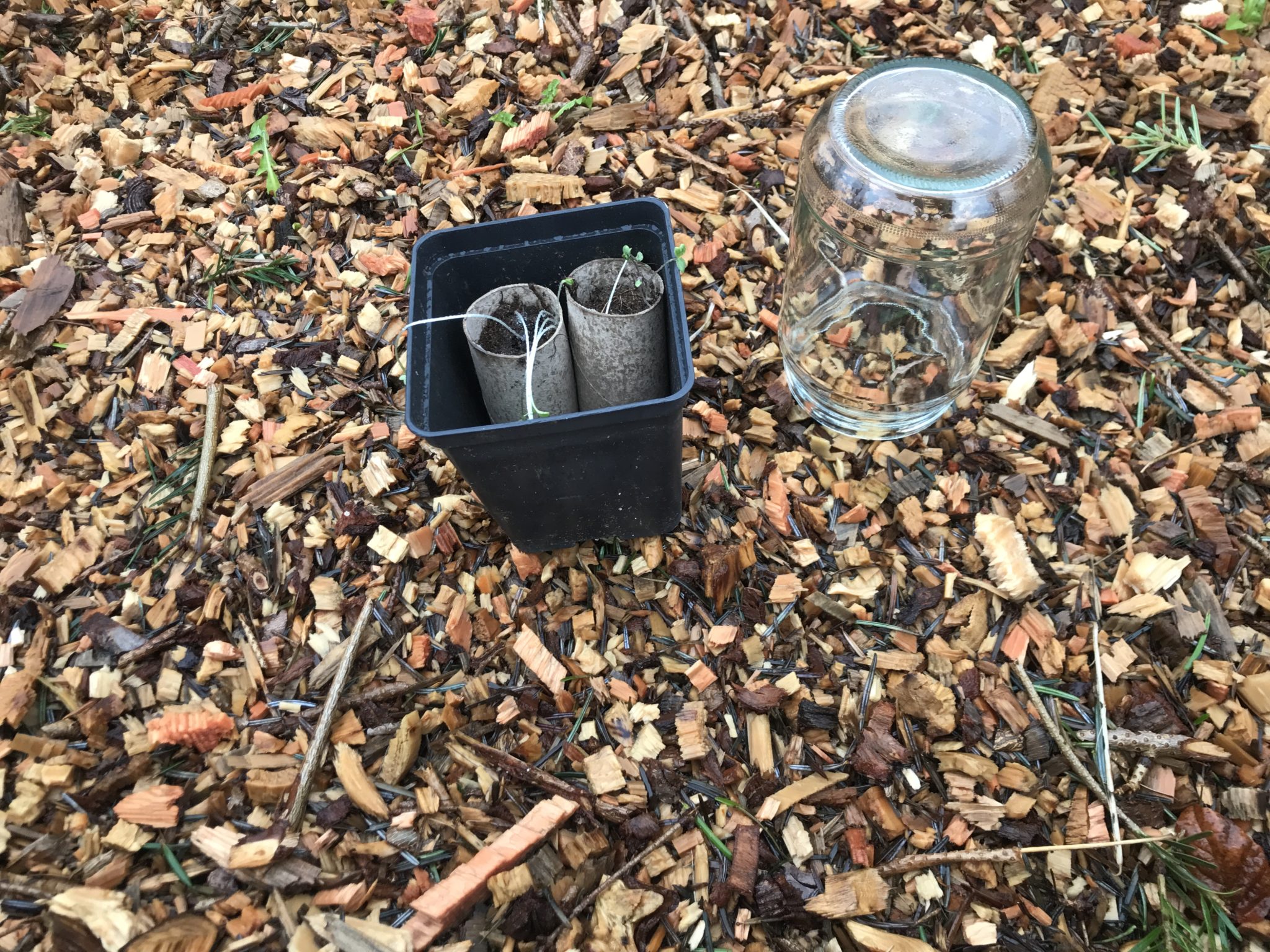Exploring the Ancient and Enduring Wonders of Amazonian Dark Earth

In the verdant heart of the Amazon rainforest lies a soil as rich in history as it is in nutrients: Amazonian Dark Earth (ADE), also known globally as Terra Preta. This dark, fertile earth, often referred to as ‘black gold’ by those who understand its value, is a legacy from the pre-Columbian civilizations that once thrived in these jungles. ADE, known in various circles as Terra Preta do Índio or Indian Black Earth, is a testament to ancient agricultural practices and a beacon of potential for sustainable farming today.
For generations, the mystery of ADE’s creation and its remarkable properties has intrigued scientists and agriculturists. Born from the ancient wisdom of indigenous people, who enriched the naturally poor Amazonian soils through sustainable and innovative methods, ADE stands as a striking anomaly in the typically nutrient-depleted soils of the region. Its rich composition and enduring fertility offer a window into ancient land management techniques and hold significant promise for modern environmental conservation efforts.
This article aims to unfold the layers of history, science, and potential that surround Amazonian Dark Earth. We will explore its origins under the names Terra Preta and Indian Black Earth, delve into its unique properties, and examine its relevance in modern-day agricultural practices, particularly for smaller-scale farms and home gardens. As we traverse from past to present, we also consider the practicality and challenges of integrating ADE into different scales of agriculture. ADE emerges not only as a historical curiosity but also as a key to unlocking more sustainable and productive agricultural methodologies for our future.
Join us in exploring the ancient and enduring wonders of Amazonian Dark Earth, a soil that carries the secrets of the past and holds the keys to a more sustainable agricultural future, offering insights into both the potential and the limitations of its application in contemporary farming practices.
Unveiling the Mystery: What is Amazonian Dark Earth?
Nestled within the lush, vibrant expanse of the Amazon rainforest lies a soil of ancient origin and extraordinary richness: Amazonian Dark Earth (ADE), also known to many as Terra Preta. This remarkable earth stands out with its deep, dark hue, a stark contrast to the typically nutrient-poor soils that characterize much of the Amazon Basin. What makes ADE particularly fascinating is not just its color but its enhanced fertility and exceptional ability to retain nutrients, qualities that have sparked intrigue and admiration in the scientific and agricultural communities alike.
The creation of ADE dates back to pre-Columbian times, crafted meticulously by the indigenous peoples of the Amazon. Through a combination of organic waste, charred plant residues, and other sustainable practices, these ancient civilizations transformed the otherwise infertile Amazonian soils into a thriving, nutrient-rich environment. This transformation was not a mere accident of history; it was a testament to the ingenuity and ecological understanding of these early inhabitants.
For those keen to dive deeper into the historical backdrop and the intricate processes behind the formation of Terra Preta, our detailed article, [Terra Preta: The Amazon’s Ancient Secret for Boosting Soil Fertility], offers an in-depth exploration. This comprehensive piece delves into the ancient practices that led to the creation of ADE, unraveling the layers of history and tradition that have shaped this unique soil.
In this current article, our journey shifts focus. We aim to illuminate the modern understanding of Amazonian Dark Earth, exploring its contemporary applications and uncovering its potential role in shaping the future of sustainable agriculture and environmental stewardship. Building on the foundation of our previous work, we will traverse through time from the ancient past to the promising horizons of the present and future, revealing how the legacy of Terra Preta continues to influence and inspire our world today.
The Creation of Amazonian Dark Earth: Ancient Practices
The rich, fertile soil known as Amazonian Dark Earth (ADE), or Terra Preta, is a product of ancient Amazonian ingenuity. These indigenous populations developed a unique method of enriching the otherwise infertile Amazonian soils, leading to the creation of ADE.
Biochar: The Key Ingredient
Biochar was a central component in the formation of ADE. This material, produced by burning organic matter in a low-oxygen environment, significantly enhances soil fertility. Research has shown that biochar improves nutrient and moisture retention, and supports beneficial microbial activity in the soil, making it an essential element in ADE’s composition. The use of biochar by ancient Amazonians is not only a testament to their environmental understanding but is also seen as a potential modern weapon against global warming, as highlighted by the American Chemical Society on ScienceDaily.
Integration with Organic Waste
The indigenous people’s practices included integrating organic waste, such as plant residues and animal manure, with biochar. This combination provided additional nutrients and helped develop a rich, humus-like soil. Modern research, such as a study published by MIT News, indicates that these practices of enriching soil with organic waste and charcoal are still employed by indigenous communities like the Kuikuro in the Amazon, demonstrating a continued tradition of sustainable soil management. The Kuikuro, for example, intentionally produce dark earth for crop cultivation, a practice that has been observed and documented in recent studies (MIT News).
Pottery Shards: An Archaeological Insight
Pottery shards found in ADE sites suggest an additional aspect of ancient soil management practices. These fragments likely played a role in moisture retention and provided surfaces for microbial growth. This finding aligns with observations of modern Kuikuro practices, where they create fertile soil through similar methods, as reported in Eos.
A Sustainable System
The sustainability of these soil creation methods is evident in their enduring legacy. Modern studies have shown that the practices used by ancient Amazonians, likely similar to those observed in indigenous communities today, were intentional and effective in creating fertile soils capable of sustaining large communities. This approach not only improved soil productivity but also contributed to carbon sequestration, an aspect explored in recent research (as detailed in Phys.org).
Through the combination of biochar, organic waste, and other materials, the indigenous Amazonian populations developed a remarkable system of soil enhancement. Their practices, which continue to influence modern sustainable agriculture, offer valuable insights into both historical and contemporary environmental stewardship.
A Nutrient Powerhouse: Analyzing the Composition of ADE
Amazonian Dark Earth (ADE) is renowned for its rich nutrient content and beneficial soil properties. This section delves into the composition of ADE, exploring why it is so fertile and how it differs from other types of soil.
Rich in Essential Nutrients
ADE’s nutrient profile is markedly different from typical Amazonian soils. It is rich in phosphorus, nitrogen, calcium, and carbon, contributing to its extraordinary fertility. This nutrient richness is a result of the various organic and inorganic materials incorporated into the soil by ancient practices, as well as the natural processes of decomposition and microbial activity. Research from MIT News highlights the high nutrient content of ADE, noting its significant carbon storage, which results from ancient practices of enriching soil with organic waste and charcoal (MIT News).
Based on the research detailed in the article “Intentional creation of carbon-rich dark earth soils in the Amazon,” the comparison between Amazonian Dark Earth (ADE) soil and control samples (background soils) can be summarized in the following table:
| Soil Property | Amazonian Dark Earth (ADE) | Control Samples (Background Soils) |
|---|---|---|
| Soil Organic Carbon (SOC) | 9 to 22 kg/m² (higher values comparable to the above-ground biomass of the Amazon rainforest) | 6 to 10 kg/m² |
| Anthropogenic SOC Enrichment | 2 to 12 kg/m² in archaeological sites, 1 kg/m² in middens from two historic villages, 5 kg/m² in Kuikuro II village middens | Not applicable |
| pH | Less acidic (increase by about 1 pH unit at Seku and 2 pH units at Kuikuro II) | More acidic |
| Elemental Concentrations | 10-fold or greater enrichment in elements associated with anthropic soil enrichment (P, K, Ca, Mg, Mn, Zn) | Lower concentrations of these elements |
| Other Elements (e.g., Al, Fe) | Al – not generally increased by human activities, Fe – abundant in background soils | Higher concentrations of these elements compared to ADE |
| Total Phosphorus (P) | Site inventories of up to 520 tonnes | Lower (277 mg/kg total P in deforested areas) |
The soil samples from ADE show significantly higher organic carbon content and less acidity compared to control samples. Elements associated with anthropic soil enrichment are much higher in ADE, indicating the impact of historical and ongoing human activity on these soil properties. In contrast, elements like aluminum (Al) and iron (Fe), which are not generally increased by human activities or are abundant in background soils, have different concentration patterns in ADE compared to control samples.
Enhanced Soil pH
The pH level of ADE is another factor that sets it apart. Unlike the acidic nature of many tropical soils, ADE tends to have a higher pH, making it more conducive to plant growth. This is attributed to the biochar and organic waste incorporated into the soil, which help neutralize acidity and create a more balanced soil environment.
Supporting Microbial Life
ADE’s composition supports a diverse and active microbial community. The presence of biochar and organic matter provides habitats and food sources for beneficial microbes, which in turn contribute to nutrient cycling and soil health. The interaction between these microorganisms and the soil’s physical and chemical properties creates a dynamic ecosystem that is key to ADE’s fertility.
Comparison with Other Fertile Soils
Comparing ADE to other fertile soils around the world, it stands out for its unique origin and composition. While other fertile soils often benefit from natural processes and environmental conditions, ADE is a result of human intervention and ancient soil management practices. This distinction underscores the potential of human ingenuity in enhancing soil fertility, a lesson that is increasingly relevant in contemporary agricultural practices.
The nutrient-rich composition of Amazonian Dark Earth not only reveals the sophisticated agricultural knowledge of ancient Amazonian societies but also offers insights into sustainable soil management practices for modern agriculture. Understanding ADE’s composition and how it contributes to its fertility can guide current efforts in soil improvement and sustainable farming.
Implications of ADE Soil Properties for Sustainable Agriculture
Enhanced Soil Fertility and Crop Yield
The nutrient-rich profile of Amazonian Dark Earth (ADE) has profound implications for sustainable agriculture, particularly in regions where soil fertility is a limiting factor. The high levels of Soil Organic Carbon (SOC) and essential elements like phosphorus (P), potassium (K), calcium (Ca), magnesium (Mg), manganese (Mn), and zinc (Zn) in ADE can significantly enhance soil fertility. This enrichment is likely to lead to improved crop yields, making ADE an attractive option for sustainable farming practices.
Soil Health and Carbon Sequestration
ADE’s high SOC content not only improves soil fertility but also plays a crucial role in carbon sequestration. The SOC levels in ADE, comparable to the above-ground biomass of the Amazon rainforest, indicate a substantial capacity for carbon storage. This characteristic of ADE is particularly relevant in the context of climate change mitigation, as healthy, carbon-rich soils can help reduce atmospheric CO2 levels.
Reduced Soil Acidity and Improved Plant Growth
The less acidic nature of ADE, as evidenced by the pH increase, is another beneficial attribute. Soil acidity is a common challenge in agricultural practices, often requiring the application of lime to raise the pH. The natural pH adjustment in ADE reduces the need for such interventions, facilitating healthier plant growth and reducing the reliance on chemical soil amendments.
Sustainable Use of Native Resources
The study of ADE also underscores the importance of understanding and utilizing native soil resources sustainably. The historical and ongoing human activities that led to the formation of ADE demonstrate how indigenous practices can contribute to sustainable land management. Emulating such practices in modern agriculture could lead to more eco-friendly and efficient use of land resources.
Challenges and Considerations
While the benefits of ADE are clear, it’s important to consider the challenges in replicating these soils in different environments. The unique composition of ADE is a result of specific historical and geographical factors, and replicating it elsewhere may require a deep understanding of local ecosystems and soil chemistry. Additionally, the large-scale adoption of ADE-like soils should be approached cautiously to ensure environmental balance and prevent unintended ecological impacts.
Conclusion: The Potential of Amazonian Dark Earth in Diverse Agricultural Settings
This article has delved into the unique properties of Amazonian Dark Earth (ADE) and its implications for sustainable agriculture. The comparison with control soil samples underscores ADE’s enriched nutrient profile, including higher levels of Soil Organic Carbon (SOC), essential minerals, and reduced acidity. These attributes suggest that ADE could significantly enhance soil fertility, improve crop yields, and contribute to carbon sequestration efforts.
The study of ADE also highlights the value of traditional and indigenous agricultural practices, showing how historical human activities have led to the creation of these nutrient-rich soils. This insight is particularly relevant for modern sustainable agriculture, indicating that learning from and adapting these ancient techniques could lead to more environmentally friendly and efficient farming methods.
However, it’s important to note that while ADE offers numerous benefits, its application might not be universally suitable for all agricultural scales. In large-scale farming settings, replicating the specific conditions and properties of ADE could be challenging and may not be the most practical solution. On the other hand, for smaller farms, homesteaders, and home gardens, the use of ADE can be a highly beneficial approach. Its ability to improve soil quality and productivity makes it an attractive option for these smaller-scale applications, where the replication of ADE-like conditions is more feasible and manageable.
In conclusion, Amazonian Dark Earth represents a remarkable example of positive human impact on soil properties. Its study provides insights into ancient agricultural practices and offers promising avenues for the development of sustainable agricultural techniques. While the replication of ADE in large-scale agriculture poses challenges, its potential benefits for smaller farms and home gardens make it a subject of great interest for those seeking sustainable and efficient ways to enhance soil health and agricultural productivity.




